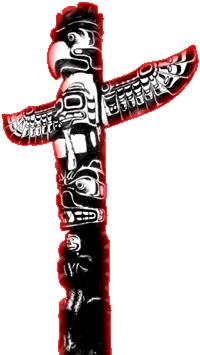|
The Beothuk Indians were the first native Canadians to be in constant contact with European settlers, and they were instrumental in shaping the settlers' views of indigenous people. The Beothuk inhabited north central Newfoundland from around 1500 AD, although eventually their territory was reduced to along the Red Indian Lake, the Exploits River and to the sea at Notre Dame Bay. There was only a small population of Beothuk to begin with: by the time the Europeans had forced the remainder of them into the centre of the island, where they suffered malnutrition and diseases like tuberculosis (introduced by the Europeans), there were only a handful of Beothuk Indians left. By 1829 white settlers had annihalated the Beothuk altogether - the Indians, armed with traditional weapons, stood little chance against the firearms of the settlers, hungry for their land. Before the arrival of white settlers, the Beothuk travelled around in distinctively-shaped canoes made from birch bark. Living on an assortment of land and sea animals, the Beothuk would even sail out to sea in their canoes (which would be ballasted with large rocks to make the boats more stable) and harpoon seals and small whales! |
 |
The Beothuk lived in houses - called mamateeks - made from wooden poles covered with birch bark, which formed a cone-like shape. Inside there would be sleeping hollows dug out and a fireplace. When the weather turned cold, the mamateeks would require several layers of birch bark and dry moss for insulation.
In winter, the Beothuk travelled by foot, wearing snowshoes and pulling heavy sleds. They would hunt caribou by building long fences from any trees and branches that they could find on the ground, which would force the herd to pass at one place so they could be speared. The meat would be frozen or smoked to preserve it through the entire winter.
The Europeans called the Beothuk 'redmen', not because of their skin colour, but for the paint, made from red ochre mixed with grease or oil, which they smeared liberally over their bodies. This paint was also used in religious ceremonies such as burials, where the body of the dead would be wrapped in birch bark and covered with red ochre. The Beothuk were the original Red Indians, the name spreading to include all native Canadians and Americans.